Japanese ‘ear-hanging’ processing techniques and equipment helping to build a micro-industry
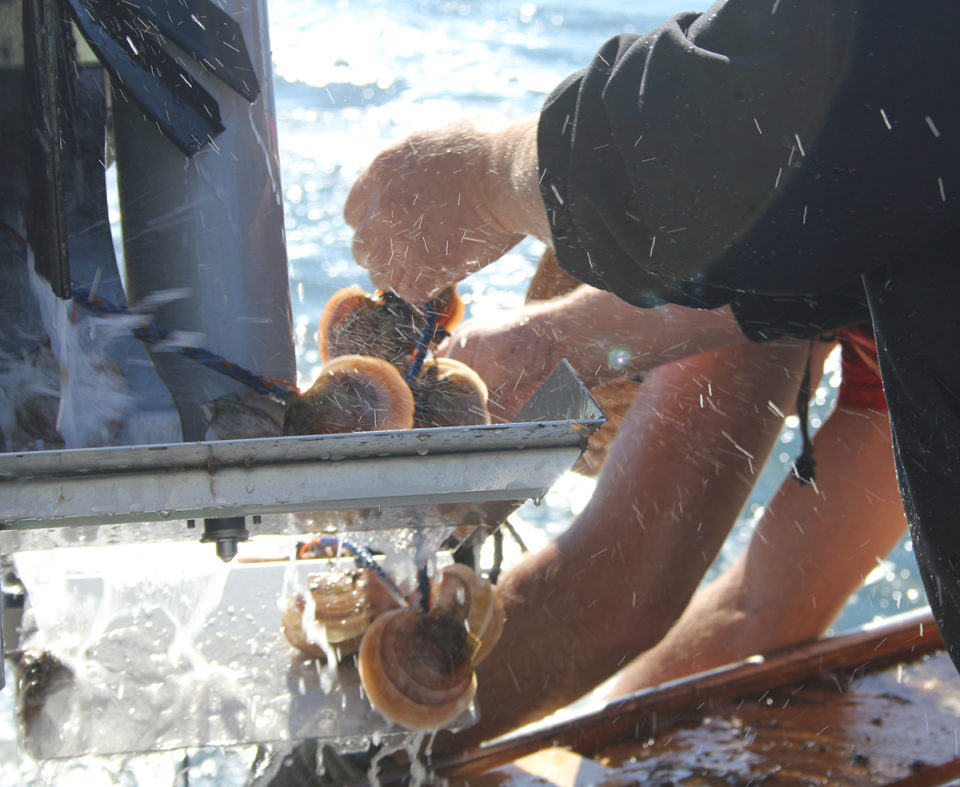
In Maine, Atlantic sea scallops (Placopecten magellanicus) are one of the most valuable fisheries in U.S. waters, the target of deep-sea draggers and divers on dayboats.
But compared to a seasonal fishery, an aquaculture crop has the key advantage of a year-round supply and steady pricing. In an attempt to build a fledgling scallop farming industry, Maine shellfish farmers started trialling a Japanese technique called ear hanging in 2017. Taking advantage of a sister state agreement with Aomori Prefecture in northern Japan, growers in Maine are working to establish semi-automated commercial aquaculture operations (the Advocate covered these efforts in 2016).
Since then, progress has accelerated. In 2018, community development and business advising firm Coastal Enterprises Inc. (CEI), which has been part of the ear hanging work since 2016, received a grant from the Foundation for Food and Agriculture Research for a three-year program to further develop ear hanging in Maine.
CEI purchased three machines from Mutsu Kaden Tokki Co., Ltd., in Mutsu City, Aomori. Five farms have utilized the equipment implementing small-scale commercial trials with several thousand scallops on each farm, while market research by CEI has been gauging the potential demand for ear-hung farmed scallops.
“After a trip to Japan in 1999, people in Maine began collecting wild seed and releasing it into the wild as a stock enhancement technique. In more recent years they have begun retaining it and trying to farm it,” said Hugh Cowperthwaite, a senior program director at CEI. “Most of the early work had been conducted using bottom cages, but scallops don’t necessarily thrive when they’re packed together. Meanwhile, Aomori has an 85-year old industry with specialized techniques for scallop farming and we wanted to try them here.”
Ear hanging involves drilling a small hole through the shell of the scallop near the hinge. Plastic pins with a small barb called age pins are then pushed through a vertical dropper line and scallops are pinned to it in pairs through the hole in their shells. The lines are then suspended in the ocean from a horizontal longline submerged several feet below the surface. The flow of the water allows the scallops to constantly feed, offers easy access to nutrients and helps the adductor muscle grow larger. They’re also protected from bottom dwelling predators and grow in un-crowded conditions.
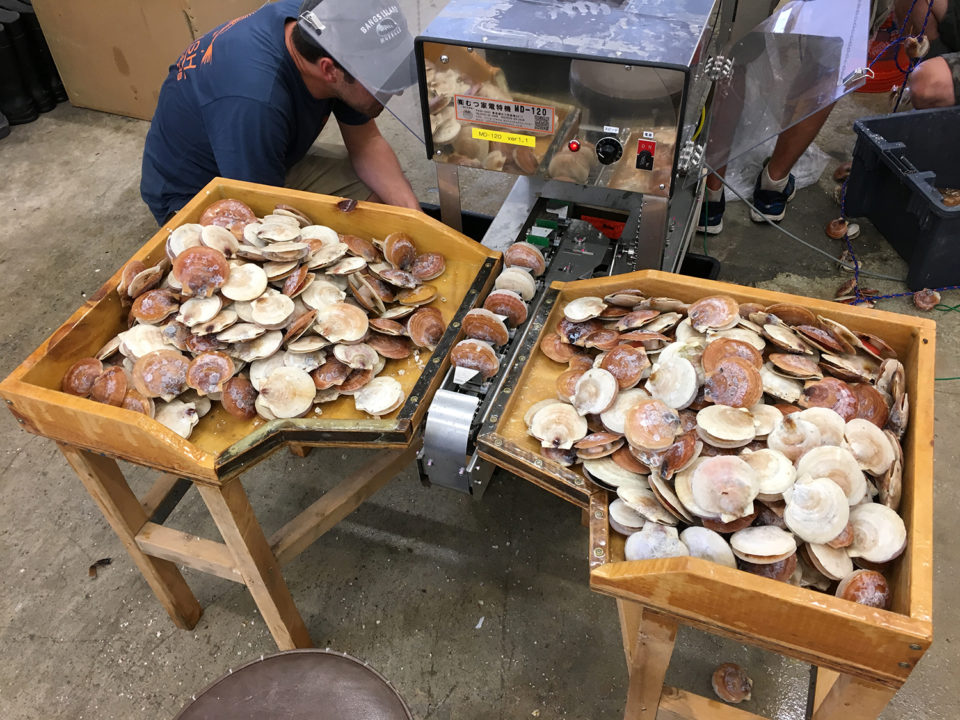
Japan’s machinery and techniques are likely to have key impacts on Maine’s scallop farming in terms of efficiency and the reduction of labor costs, said Alex de Koning of Hollander and de Koning Mussel Farms, which is testing the ear-hanging technique.
“Ear hanging by hand isn’t cost effective enough to run a full-size business, and a farm can’t be financially sustainable if labor costs are high,” he said. “But with a machine, one person could easily handle 10,000 scallops a day compared to 500 an hour by hand. A machine will also get efficiency high enough that it is no longer cost prohibitive because of labor costs, and you’ll be able to compete on price well enough to take a bite out of the much larger adductor muscle market.”
With consumer demand for scallops high, farmers hope that ear hanging will result in commercial-scale operations, but Cowperthwaite warned there are still some issues, in particular biofouling and adequate water depth.
“Most farms sites we have tried in Maine are 50 to 55 feet deep but in Japan they typically farm in at least 75 feet or more,” he said. “They hang their scallops below the upper light zone where biofouling is intensified. Once you have fouling on your gear and scallops, it really impacts the efficiency of your husbandry down the line.”
In order to address this, de Koning’s farm was selected for its deeper depths of 100 to 150 feet. With 4,000 scallops now hung there, and an automatic ear hanging machine arriving next spring, de Koning is confident that things will take off.
“There are still some challenges and a lot of guess and check. It’s a matter of density, water current, food availability, how close you put the lines to each other, the ideal depth in which to hang the lines. But with the help of Japan’s equipment I believe Maine’s scallop farming will develop,” he said.
“We’re a few years into this work but we’re on a good track and we’ll see what we can produce at the deep water sites,” said Cowperthwaite. “With the right farmer, proper husbandry techniques and minimal biofouling, we could have an incredible product.”
In Japan, growing scallops suspended from longlines has been proven to be better than cages on the sea floor, but farms in Maine must determine if the Japanese machinery can work with scallops that are native to their shores. A grader sorts the scallops by size and a drilling machine drills a hole into the hinge of each scallop shell. Workers then have to insert the plastic pins into the holes by hand, which fastens the scallops to the dropper lines. The scallop washer is a machine used to remove organic material from the shells and lines.
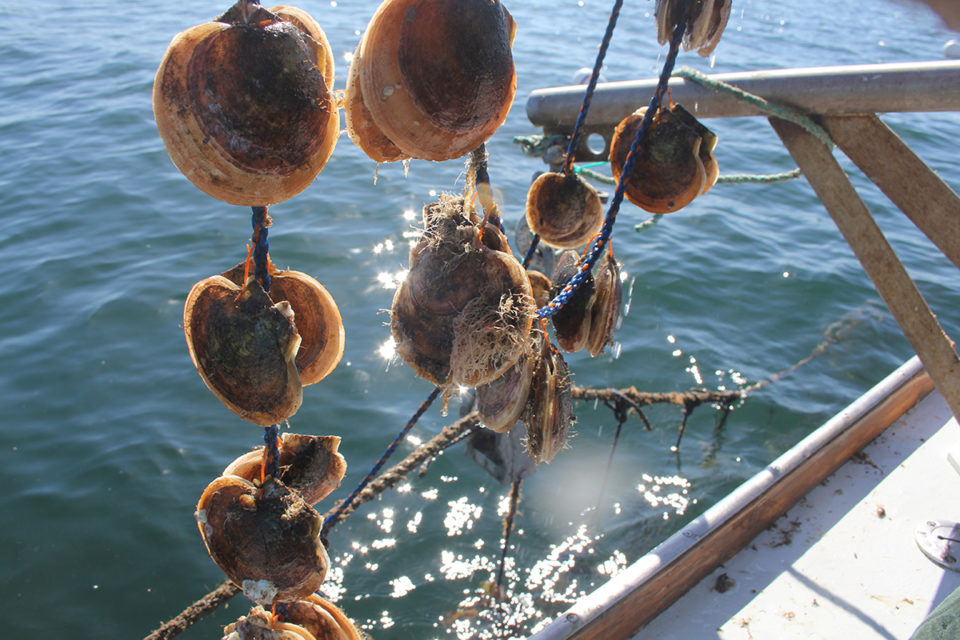
While much of this can be replicated, there are some differences between Japanese scallops (Patinopecten yessoensis) and Atlantic sea scallops. Atlantics have a slightly flatter shell with thin edges, while the shell of Japanese scallops is more ridged, adding to overall strength and stability. Japanese scallops have a larger cup and grow fast. Atlantic sea scallops appear to be more fragile and slower growing.
“The machinery is high quality, stainless steel and very efficient so it hasn’t required modification but that’s not to say that there couldn’t be improvements,” said Cowperthwaite. “We’ve been very fortunate to have an on-going relationship with the Japanese. If we have questions, they’re very open and responsive.”
“It’s a case of setting the springs a little weaker so you don’t crush the scallops, letting them get a bit bigger before certain operations or lowering the water pressure,” said de Koning. “The machines are relatively adjustable and can fit our scallops within the set points.”
As ear hanging is still being tested, it’s unclear whether it will be profitable long-term but CEI’s market analysis of the technique’s prospects is promising, with strong market and consumer acceptance and a market for shellfish production. CEI is now working with a scallop farmer in Stonington (who uses lantern nets exclusively) to publish a cookbook on ways to prepare scallops. With seafood primarily a restaurant experience in the United States, CEI’s aim is to help educate both home consumers and chefs alike that farmed sea scallops are a premium seafood product that can be enjoyed in a restaurant or even at home, something that’s becoming more important as people stay at home during the coronavirus pandemic.
Meanwhile in Japan, Mitsuru Sugiyama of Mutsu Kaden Tokki Co. is excited about developments in Maine.
“They have a strong intention to adopt ear hanging. They took the trouble to go all the way to Japan and see the technique for themselves. They’re enthusiastic and we’ll continue to cooperate with them in future. We’ve learned that like Japan, the culture method, timing, work schedule and process differ depending on region, and that Maine also needs a farming method that’s suitable for its local environment,” he said. “While we continue to test ear hanging, various issues may arise but we’re willing to support the team in Maine and tackle these together. We hope that they’ll increase production and maintain their good quality farmed scallops.”
Follow the Advocate on Twitter @GAA_Advocate
Now that you've reached the end of the article ...
… please consider supporting GSA’s mission to advance responsible seafood practices through education, advocacy and third-party assurances. The Advocate aims to document the evolution of responsible seafood practices and share the expansive knowledge of our vast network of contributors.
By becoming a Global Seafood Alliance member, you’re ensuring that all of the pre-competitive work we do through member benefits, resources and events can continue. Individual membership costs just $50 a year.
Not a GSA member? Join us.
Author
-

Bonnie Waycott
Correspondent Bonnie Waycott became interested in marine life after learning to snorkel on the Sea of Japan coast near her mother’s hometown. She specializes in aquaculture and fisheries with a particular focus on Japan, and has a keen interest in Tohoku’s aquaculture recovery following the 2011 Great East Japan Earthquake and Tsunami.
Tagged With
Related Posts
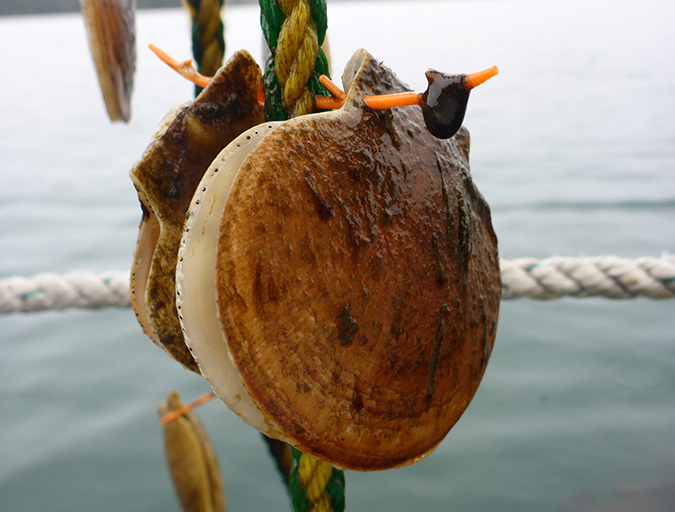
Innovation & Investment
Maine scallop farmers get the hang of Japanese technique
Thanks in part to a unique “sister state” relationship that Maine shares with Aomori Prefecture, a scallop farming technique and related equipment developed in Japan are headed to the United States. Using the equipment could save growers time and money and could signal the birth of a new industry.
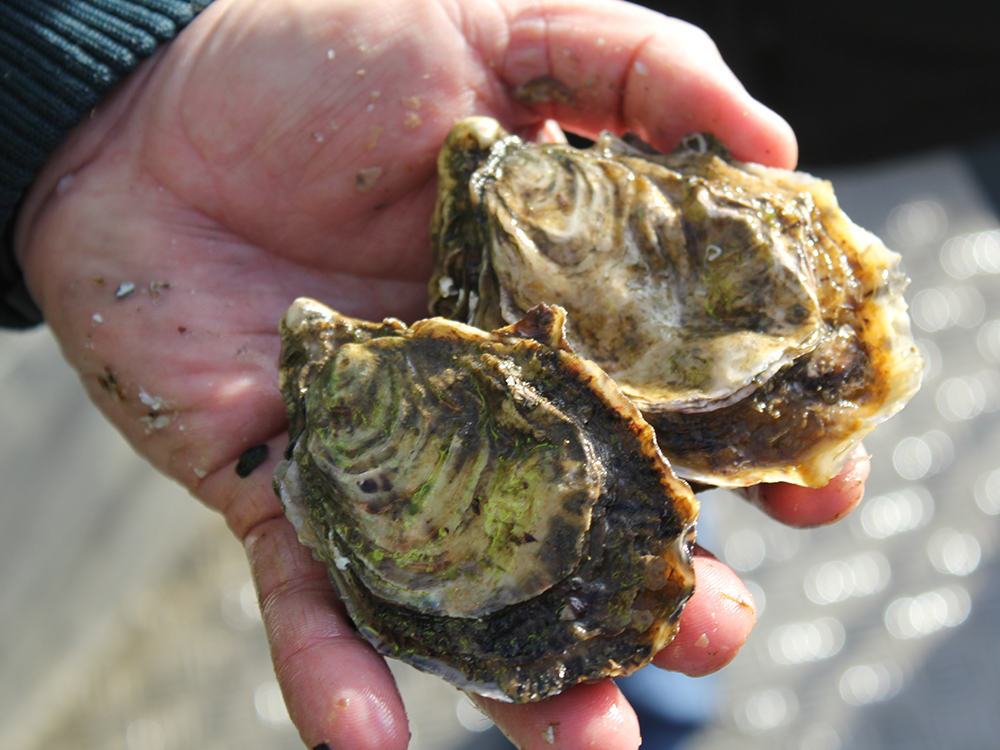
Intelligence
Behold the nutritious oyster
Oysters provide important, natural filtration of water and are an important component of many healthy coastal ecosystems because their active filtering can help improve and maintain water quality. For many coastal communities, oysters are an important food resource and excellent sources of protein and amino acids, zinc, selenium, iron and B-vitamins.

Intelligence
Norway’s scallop industry moves toward large-scale larval culture
Research on the great scallop in Norway has focused on improving the rearing environment and enhancing larval and spat yield.
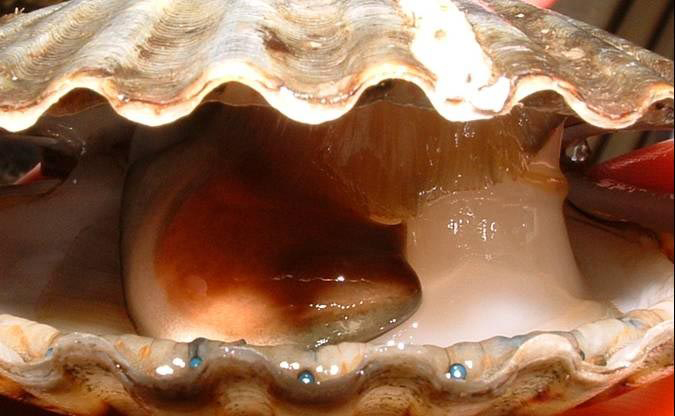
Health & Welfare
Lab studies genes involved with growth, development of bay scallops
In the 1960s, scientists identified bay scallops as a candidate for aquaculture and established many of the techniques behind current culture methodologies.

